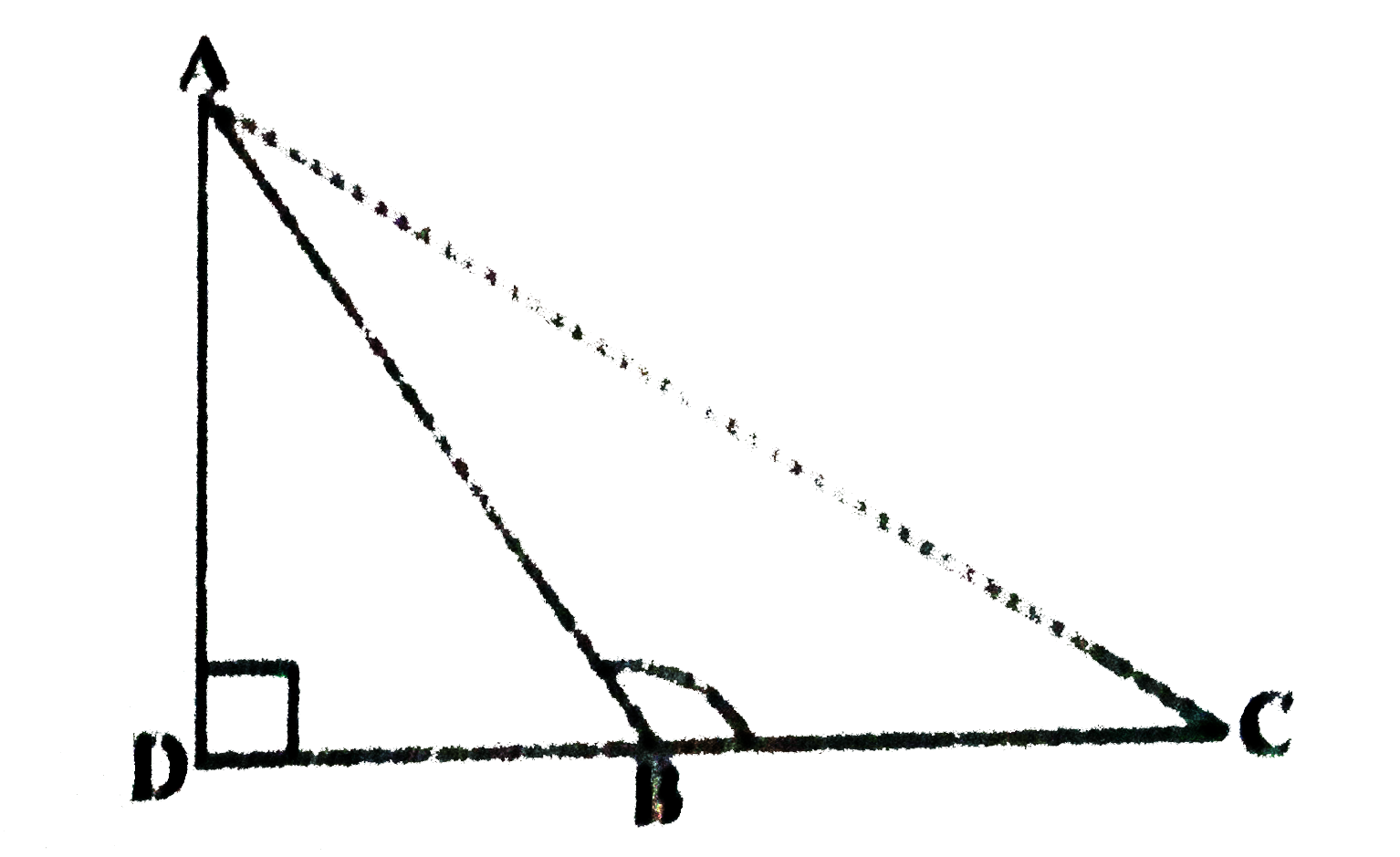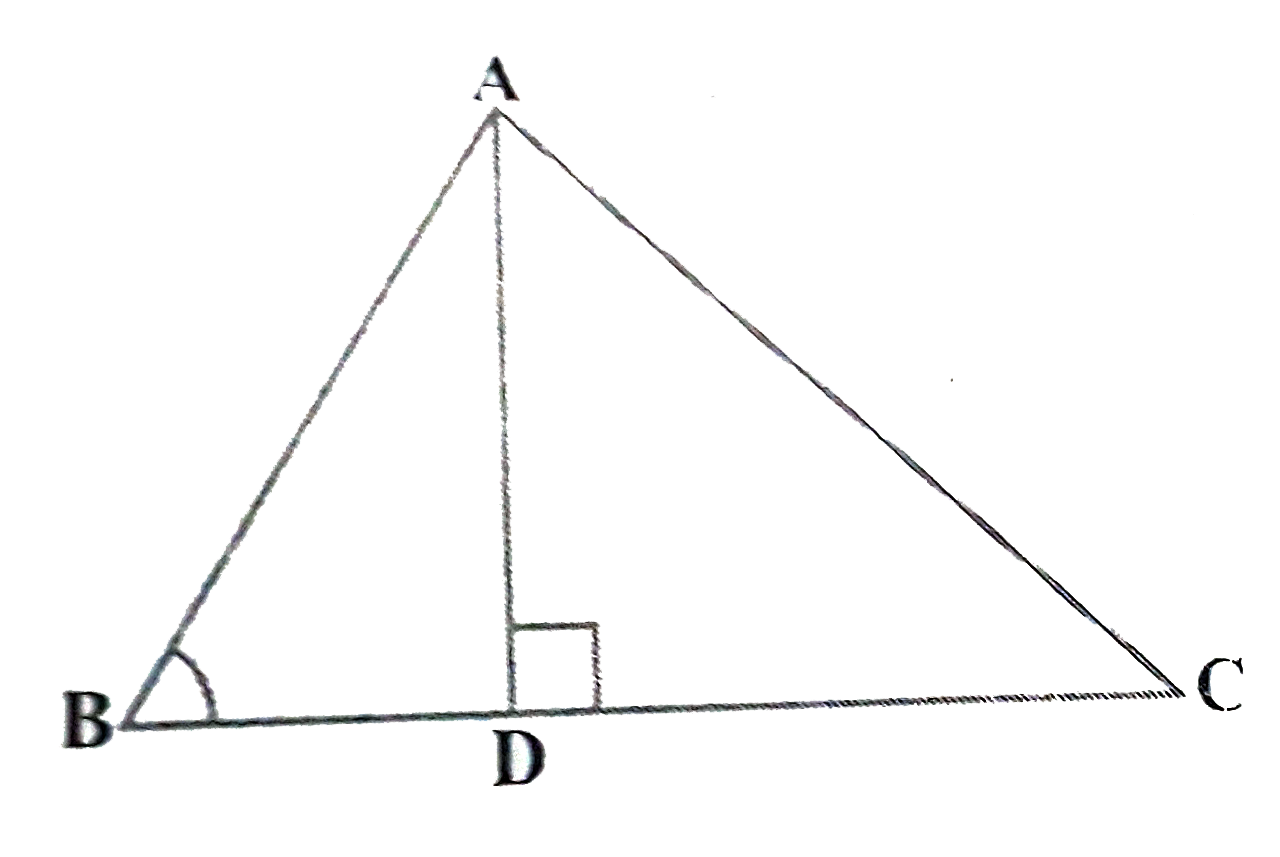In Figure, AD⊥BC and BD=13CD. Prove that 2CA2=2AB2+BC2
Given : AD⊥BCandBD=13CD
In△ABD
Applying Pythagoras theorem
∴AB2=AD2+BD2…eq(1)
In△ADC
Applying Pythagoras theorem
∴AC2=AD2+CD2…eq(2)
Subtracting eq(1) from(2) we get,
∴AC2=AD2+CD2…eq(2)
Subtracting eq(1) from eq(2) ew get,
∴AC2–AB2=CD2–BD2…eq(3)
BC=BD+CD
BC=13CD+CD
∴BC=43CD
:. CD = ¾ BC
BD=13CD
∴BD=13(34BC)
∴BD=¼BC
Putting value of CD & BD in eq(3)
AC2–AB2=CD2–BD2
∴AC2–AB2=(34BC)2–(14BC)2
∴AC2–AB2=916BC2–116BC2
∴AC2–AB2=816BC2
∴AC2–AB2=½BC2
∴2AC2–2AB2=BC2
∴2AC2=BC2+2AB2
Hence proved
Topper's Solved these Questions
Similar Questions
In a △ABC, AD⊥BC and AD2=BD×CD. Prove that ABC is a right triangle.
View SolutionThe perpendicular AD on the base BC of a triangle ABC intersects BC at D so that DB=3CD . Prove that 2 AB2=2 AC2+BC2 .
View SolutionIn figure, ABC is triangle in which ∠ABC=90∘and AD⊥CBproduced. Prove that AC2=AB2+BC2−2BC.BD.
 View Solution
View SolutionIn Figure, ∠ACB=90. and CD⊥AB . Prove that CB2CA2=BDAD
View SolutionIn figure, ABC is a triangle in which ∠ABC=90∘and AD⊥BC. Prove that AC2=AB2+BC2−2BC.BD.
 View Solution
View SolutionIn figure, ABC is a triangle in which ∠ABC=90∘and AD⊥BC. Prove that AC2=AB2+BC2−2BC.BD.
 View Solution
View SolutionIn Figure, ∠BAC=90. and segment AD⊥BC . Prove that AD2=BD×DC .
View SolutionIn figure, ABC is triangle in which ∠ABC>90∘ and AD⊥CBproduced. Prove that AC2=AB2+BC2+2BC.BD.
 View Solution
View SolutionIn ABC , ∠C is an obtuse angle. AD⊥BC and AB2=AC2+3 BC2. Prove that BC=CD .
View SolutionIn fig., if AD⊥BC, prove thatAB2+CD2=BD2+AC2.
View Solution

